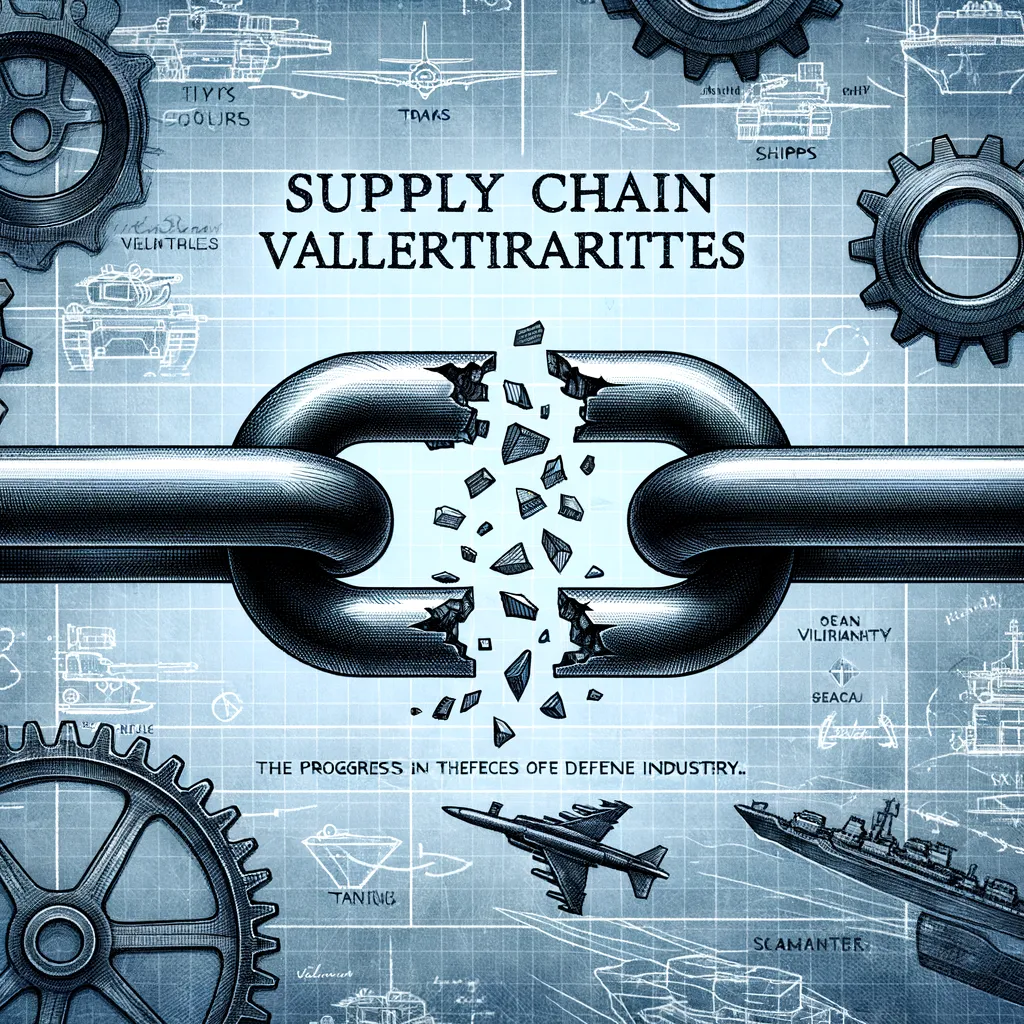How Supply Chain Vulnerabilities Are Undermining the Defense Industry's Progress

What’s the Biggest Challenge in the Defense Industry Right Now?
When we think about defense, our minds often jump to the latest military tech, complex weapons systems, or the latest in cyber defense. But what’s the real pressing challenge? What’s the constant thorn in the industry’s side that disrupts progress and keeps leaders up at night?
One of the biggest challenges in the defense industry today is supply chain security. Whether it's shortages, cyber threats, or logistical hiccups, ensuring the steady flow of parts, materials, and tech is no small feat. It’s more complex than it might seem from the outside, and as defense systems continue to become more sophisticated, the risks to the supply chain multiply.
So, what questions should we be asking about this issue?
How Vulnerable is the Defense Supply Chain?
The defense supply chain is one of the most complex in the world. It involves multiple tiers of suppliers, global logistics networks, and a vast array of specialized parts. It's a high-stakes game.
But the system's very complexity is its Achilles' heel. With so many moving parts, there are countless vulnerabilities. A single weak link in the chain can lead to significant delays, cost overruns, and even mission failure.
Think about the production of a modern fighter jet. It’s a massive system made up of thousands of components sourced from hundreds of suppliers around the world. A delay in getting one of those components to the assembly line can halt production. More critically, a cyberattack or disruption to a critical supplier can jeopardize national security.
And it’s not just about the jet’s hardware. For example, the F-35 program has been under scrutiny for its software supply chain vulnerabilities. Hackers targeting software providers could cause massive disruptions. In today’s defense world, cyber threats have escalated from nuisance to front-line attacks.
So the real question is, how do we shore up these vulnerabilities?
Can You Really Secure a Global Supply Chain?
The simple answer? It's tough, but not impossible.
Securing a global defense supply chain means looking at it from multiple angles. It’s not just about the physical movement of goods but also the data and communications that underpin each transaction. Here are a few strategies that can help:
- Diversification of Suppliers: Relying on a single source for critical components is a recipe for disaster. A diversified supplier network reduces the risk of disruption if one supplier goes offline.
- Cybersecurity Protocols: Strong cyber defenses are crucial at every link in the chain. This includes everything from securing emails between suppliers to building resilient networks that can withstand cyberattacks.
- Transparency & Visibility: Having real-time visibility into the supply chain is essential. Leaders need to know where potential bottlenecks or vulnerabilities are before they become a problem. Leveraging new technologies like blockchain could increase transparency and security across the board.
- Onshoring & Nearshoring: As we’ve seen with the global chip shortage, relying on overseas suppliers can create significant risks. Shifting some production back to domestic or nearshore suppliers can reduce exposure to geopolitical risks and supply disruptions.
Still, while these solutions can mitigate risks, they’re far from foolproof. So where does that leave us?
What Role Does Geopolitics Play in Defense Supply Chain Security?
Geopolitics is the wild card in the defense supply chain. It’s not just about the technology or logistics. Political events can throw an entire supply chain into disarray overnight. Sanctions, trade wars, and even military conflicts can restrict access to critical materials and suppliers.
Let’s look at the U.S.-China relationship, for example. China is a key supplier of rare earth elements, which are essential for producing everything from smartphones to missile systems. A trade war or diplomatic fallout with China could cripple the defense industry's ability to source these materials.
And it goes both ways. Defense companies must also navigate export controls and compliance regulations to avoid providing sensitive technology to nations that may use it against their own or allied forces.
The delicate balance between political alliances and global supply chains is a reality that defense leaders must constantly juggle.
How Can Emerging Technologies Help?
While the challenges are formidable, emerging technologies offer some hope. Artificial intelligence (AI), machine learning (ML), advanced analytics, and blockchain are game changers when it comes to securing the defense supply chain.
- AI & Machine Learning: AI and ML algorithms can predict potential supply chain disruptions before they happen. These technologies can analyze massive amounts of data from across the supply chain, identifying patterns and anomalies that human analysts might miss.
For example, machine learning models can monitor weather patterns, political instability, or financial health of suppliers to flag potential risks far in advance. This helps decision-makers pivot operations before a delay or disruption occurs.
- Blockchain: Blockchain technology provides an added layer of transparency and security. With a distributed ledger, all transactions and movements of goods can be tracked in real-time, reducing the risks of fraud or tampering.
By implementing blockchain, defense companies can have a secure, verifiable audit

